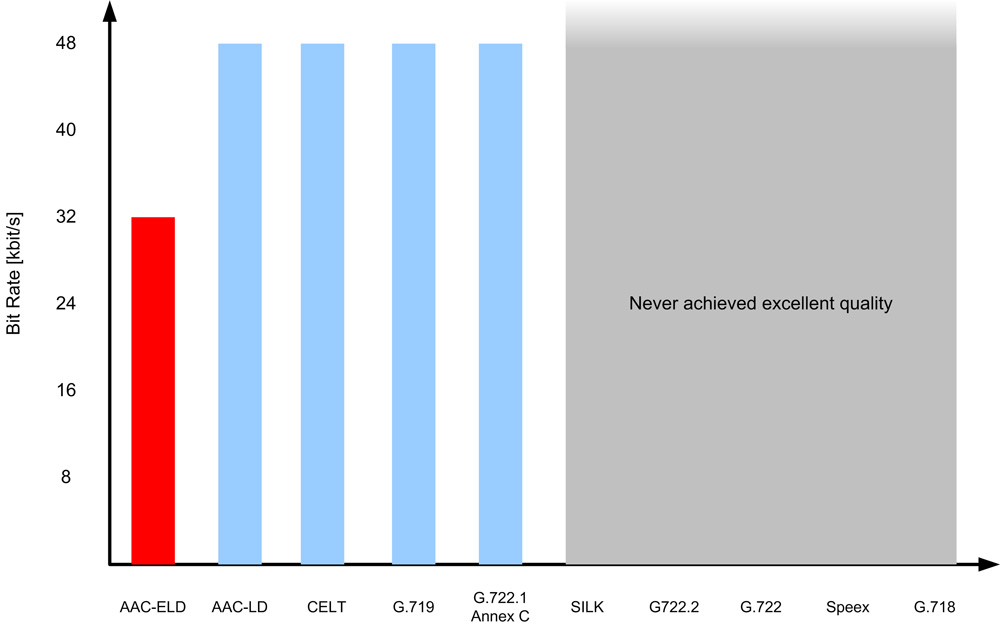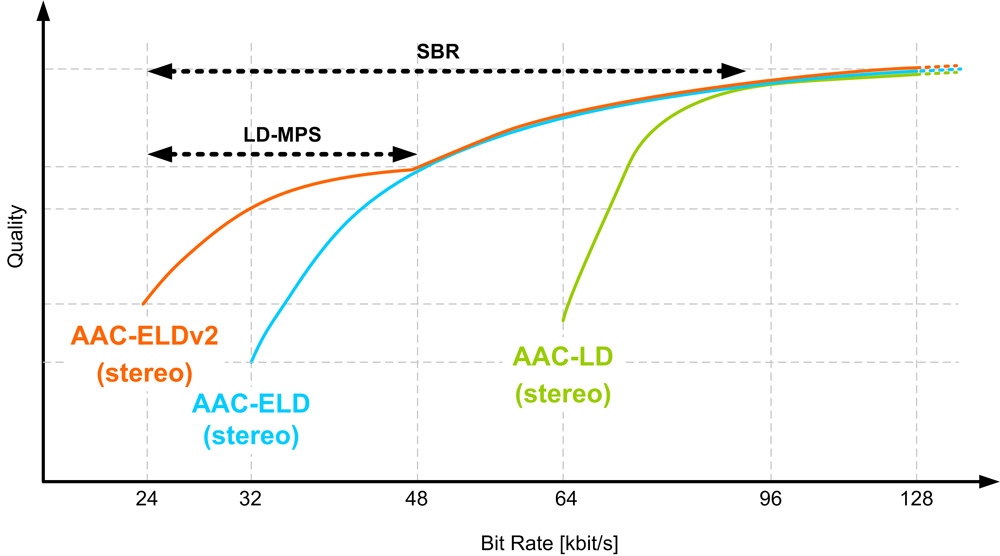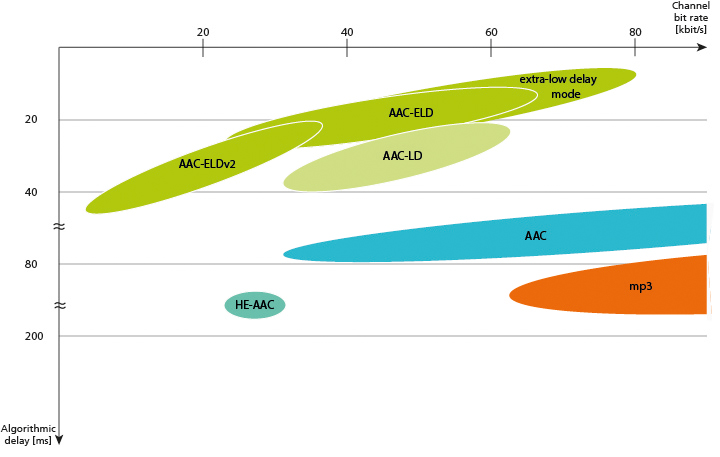The low delay audio codecs for teleconferencing and OTT services
Already being widely used for professional and consumer communication applications, the AAC Low Delay codecs are state-of-the-art MPEG-4 audio codecs for maximum speech and audio quality at very low coding delay. By supporting the full audio bandwidth of 20 kHz, they are able to deliver Full-HD Voice audio quality to IP-communication applications and devices. These codecs can be regarded as a superset of each other, as they share the same coding core and each adds new coding tools. Software of the AAC-ELD codec family can be expected to be fully backward compatible.
The codecs of the AAC-ELD family enable various channel configurations from mono and stereo to a maximum of 48 channels.
Examples of AAC-ELD implementations include:
- Video-Telephony: Apple FaceTime
- Videoconferencing/Telepresence: Cisco, Tandberg, Polycom
- Operating systems: iOS, Android, Mac OS
- Broadcast contribution: Telos
- Standards: TIP, ETSI/Dect, OIPF, N/ACIP
NEW
Thanks to its new delay-reduced mode, AAC-ELD is now able to further reduce coding delay to 7.5 ms at a sampling rate of 48 kHz. This new mode is fully compliant to ISO/MPEG AAC standard. To learn more, please read our Technical paper “The AAC-ELD Family for High Quality Communication Services” (p. 6).


